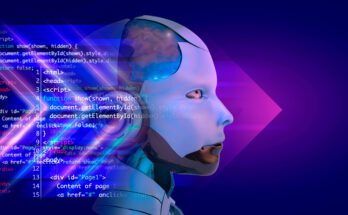Ever wondered how Devin AI, the world’s first AI software engineer, actually works? In our previous blog posts, we explored the potential of Devin and its impact on the future of coding. But the inner workings of this groundbreaking AI tool can seem like a mystery.
This post aims to demystify Devin AI. We’ll delve into its technical capabilities and functionalities, making it understandable for both programmers and those with a general interest in AI.
Understanding Devin’s Architecture:
Imagine Devin AI as a complex system with several key components working together. Here’s a simplified breakdown:
- Natural Language Processing (NLP): This is the brain of Devin’s communication system. NLP allows Devin to understand natural language descriptions you provide, like the functionalities of a desired software program.
- Machine Learning Models: Devin utilizes pre-trained machine learning models to translate your descriptions into code. These models have been trained on vast amounts of code data, allowing them to identify patterns and generate functional code.
- Code Generation Engine: Based on the processed information from NLP and machine learning models, Devin’s code generation engine translates your descriptions into actual code.
- Debugging Tools: Devin can analyze the generated code and identify potential errors or inefficiencies. It can even suggest improvements and fixes, streamlining the development process.
From Natural Language to Code:
The magic happens when you describe your desired software program in plain English. Here’s a simplified glimpse into the process:
- NLP Analysis: Devin’s NLP component analyzes your natural language description, extracting key functionalities and requirements.
- Machine Learning Matchmaking: The extracted information is then fed into Devin’s machine learning models. These models search for patterns and identify similar code structures from their training data.
- Code Generation: Based on the identified patterns, Devin’s code generation engine creates functional code that fulfills your described needs.
It’s important to remember: This process is still under development, and the generated code might require human review and refinement.
The Power of Automation:
Devin AI goes beyond just code generation. It can automate various tasks in the development workflow, freeing up valuable developer time for more complex problem-solving. Here are some potential areas of automation:
- Repetitive Coding Tasks: Devin can automate tasks like generating boilerplate code, data validation routines, and unit tests.
- Code Reviews and Debugging: Devin can analyze code and identify potential bugs, suggesting fixes and improvements, leading to more robust software.
- Deployment Automation: (if applicable) Devin might automate the deployment process of your software, streamlining the transition from development to production.
Learning and Adaptation:
One of the exciting aspects of Devin AI is its potential for continuous learning. As developers interact with Devin and provide feedback, it can potentially learn from this interaction and improve its capabilities over time. This feedback loop can lead to a more sophisticated and adaptable AI tool in the future.
Visualizing Devin’s Architecture (Optional):
To enhance understanding, consider including a visual representation of Devin’s architecture, like a flowchart or diagram, in your blog post. This can be a simple illustration showcasing the key components and their interactions.
By Demystifying Devin AI, We Can:
- Bridge the Gap: This post aims to make Devin AI more approachable for both technical and non-technical audiences.
- Empower Developers: Understanding Devin’s capabilities allows developers to leverage its power more effectively in their workflows.
- Fuel Innovation: Demystifying AI tools like Devin paves the way for further innovation and collaboration between humans and AI in the software development landscape.
Stay tuned for future posts! We’ll explore specific use cases of Devin AI, delve deeper into its technical aspects, and discuss the potential future advancements of this revolutionary tool.pen_spark




As I web-site possessor I believe the content material here is rattling magnificent , appreciate it for your efforts. You should keep it up forever! Good Luck.
Thank you!